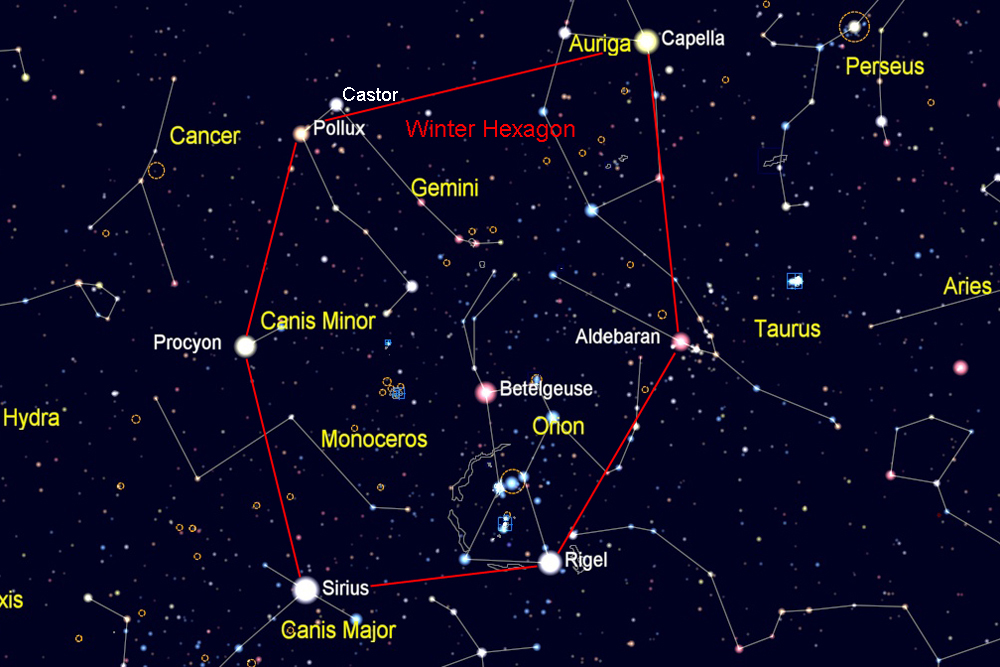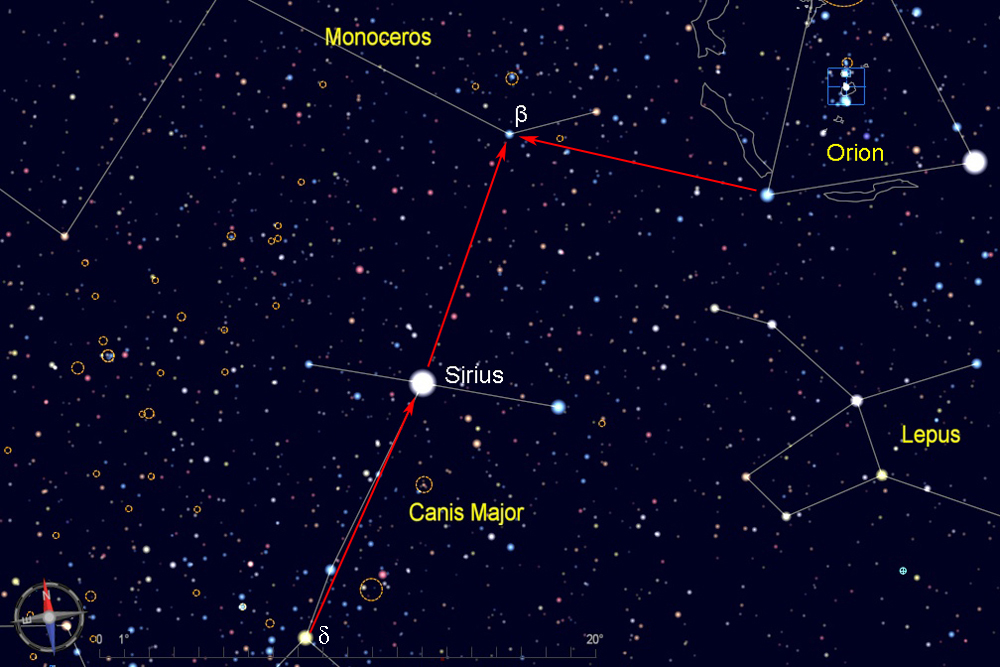Find the Winter Hexagon, which is composed of six of the brightest stars in the sky--Sirius, Procyon, Pollux, Capella, Aldebaran, and Rigel. On mid-winter evenings, these stars form a large oval stretching from low in the south to nearly overhead. As spring begins, the Winter Hexagon sinks toward the west. The constellation Orion and its bright red star Betelgeuse are inside the Hexagon.
For this star hop, find Sirius, the brightest star in the sky.

At a combined magnitude of about 3.8, β Monoceros should be easy to see even in a light-polluted sky. To locate it, use the stars that represent the backbone of Canis Major (δ and Sirius) as a pointer, and extend this line the same distance (about 10 degrees) to reach β Monoceros. Note that β is also about 10 degrees east of the lower part of Orion.
